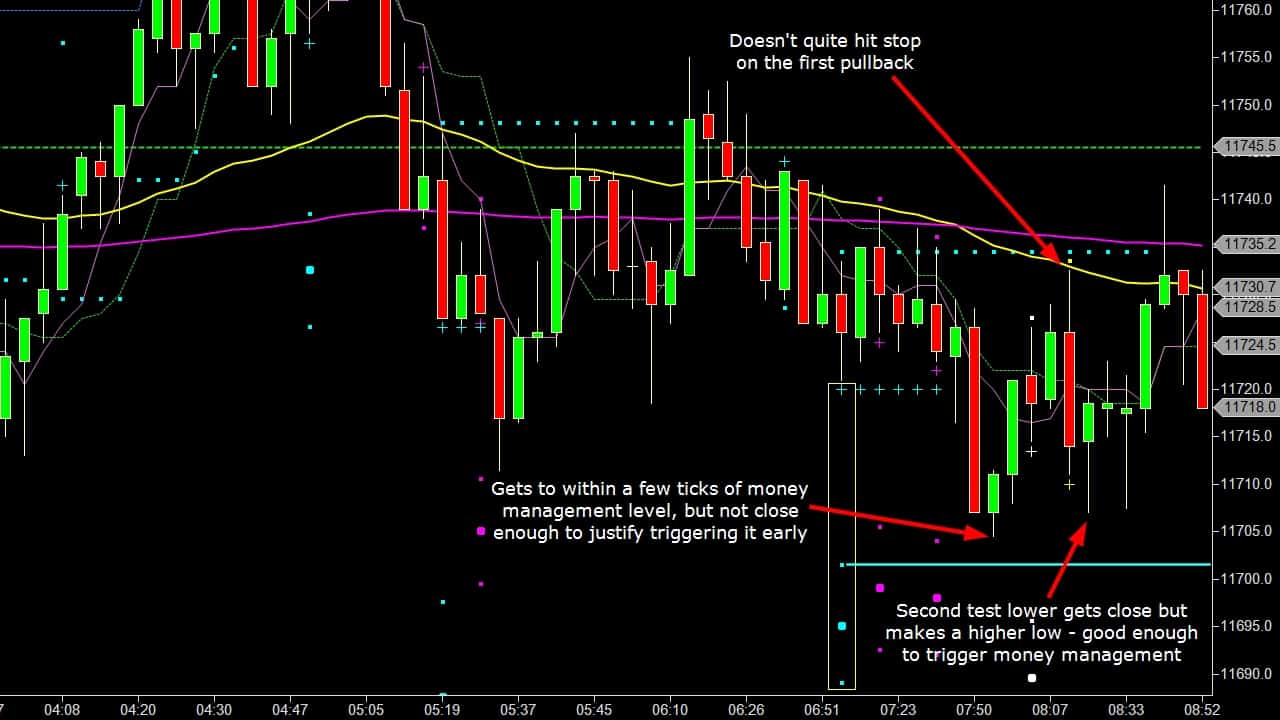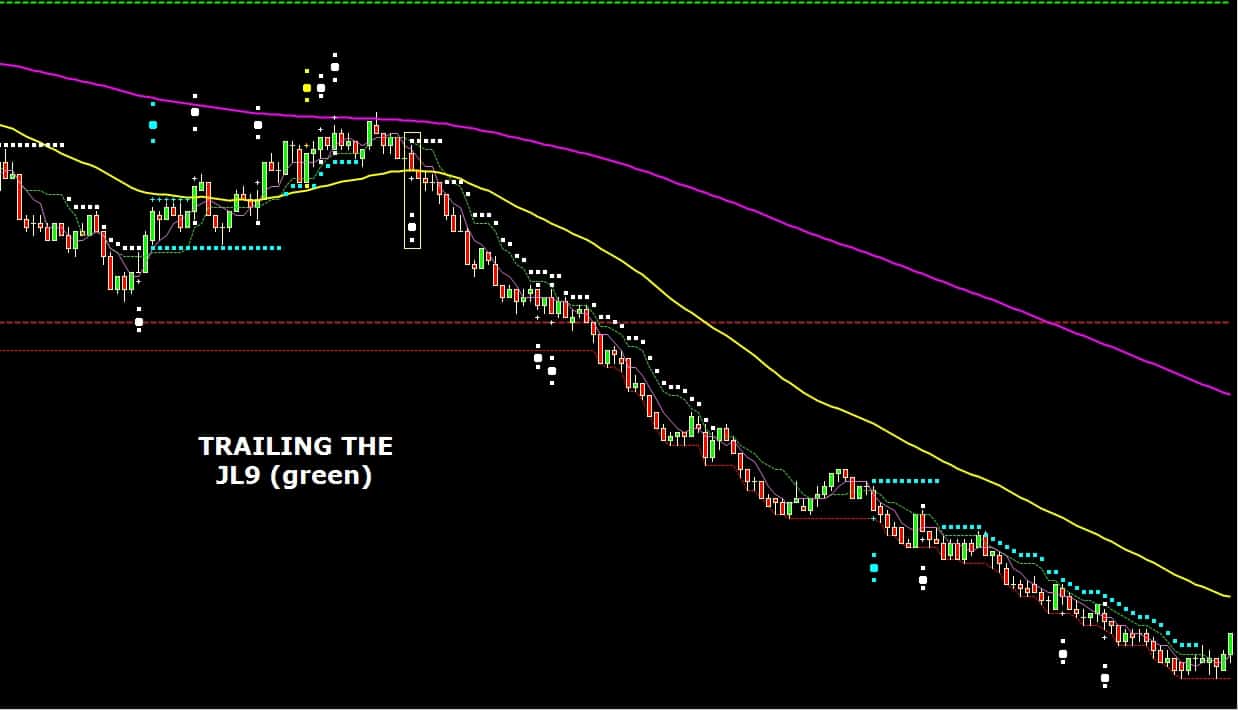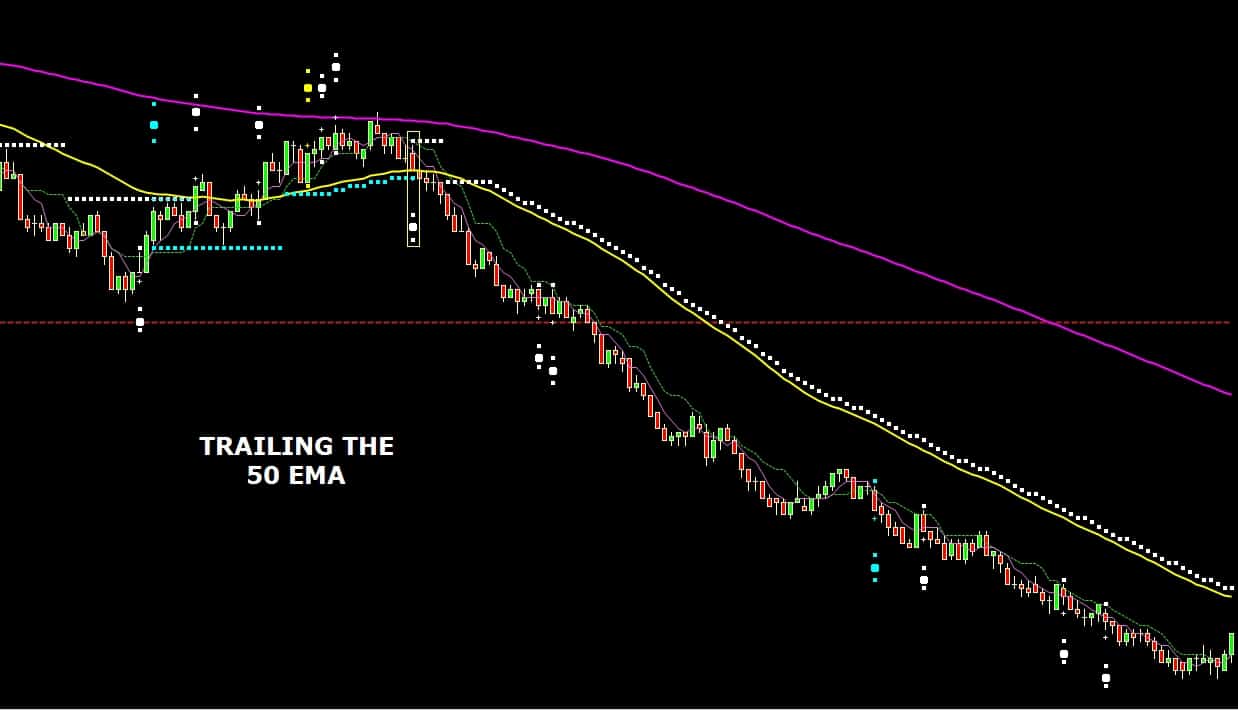Wouldn’t it be great if we knew just how the market was going to behave at all times and what the best place to put our stop order was? If there was one place relative to our entry which would consistently maximize profits and minimize losses, trading would be far simpler. Unfortunately, this is simply not the reality that traders face. Markets are by nature quite changeable, especially when day trading. Whether something works for a few trades or a few months, ultimately there’s likely to be a point where you need to adapt what you’re doing. Understanding the different circumstances that can impact upon the best ways to manage your stop can have a positive impact on your bottom line.
Standard MethodsThe default way that Trend Jumper is set up to take profits is a fixed target scale out (based on the setup bar) and a trailing exit. This is for very good reasons – the fixed target is a decent but very attainable target number of ticks, which when it’s hit, helps to significantly improve the theoretical average of the trade. On a two position strategy, it would move the break-even price for the entire trade to the other side of the entry same number of ticks as the fixed scale out. So it’d have to move double the amount of the target against the remaining position to get back to BE. But by this time, you’re already trailing the stops anyway – and this gives you the chance to capture any significant directional move. But the standard trailing length can at times be a little tight.
The initial stop (also generated based on the setup bar), is set to move only when a smaller trigger price is hit. At this point, the stop is moved to lock in the trade and the entire position begins to trail the market movement. This is frequently very helpful in making a trade theoretically “safe”, but sometimes the trigger doesn’t happen quickly enough.
Lock In QuickerSometimes it’s important to lock a trade in more quickly than you’d do so by default. This might be because there’s an economic release due out and the added risk needs to be offset. Sometimes the money management target is just pretty big and you so you need to weigh the chances of the market moving back against you and hitting your stop after already having been onside a great amount. Sometimes, price action dictates that you’re likely to get reversal before your MM level is hit. Sometimes there’s a really clear level of support or resistance that a market bounces off before hitting your MM.
In any of these cases, it might be sensible to get your stop moved before the actual MM price is hit.
This is an example from the Dax where a higher low meant triggering MM early and locking in the trade was justified and saved a full stop out: –
 Split Stop
Split StopBut there are also situation which arise where you want to remain in the trade because there’s a great chance to get your target, but you feel that the full position carries too much risk. Therefore, it might in some circumstances be worthwhile reducing your risk by being more conservative with your stop for part of your position.
For example, in the Dax trade above which didn’t hit MM, if you’re trading at least 2 contracts, it would have been possible to lock in some of the position but not all of it. So when it tested lower the first time, ½ of the position could have been locked in and would have reduced risk – in this case, the position’s total MAE (maximum adverse excursion) on the first swing which nearly stopped out, would’ve been half the value had the whole position still been active.
Fundamental MovesYou might also consider changing your stop depending on the likely controlling participant. If there’s not much directional action, perhaps it’s better to weight your exits more toward taking fixed targets. If there’s a big announcement due (such as the ECB or FOMC rate decisions/press conference) recognizing that there’s an elevated potential for a large directional move might give you the opportunity to trail more loosely given that the rewards are potentially high. Understanding who’s trading and why can really help you get to grips with when to adapt how you trail your stops.
The difference in what you can take out of the market in the right situations can be vast. For example: –

Vs: –

Changing how you implement your stops on a situational basis isn’t necessarily for beginners and is a more advanced technique. But if you have a good understanding about market support/resistance levels, price action and the types of participants active in the auction, it can really help you to leverage a systems that’s already great.
Trade well.